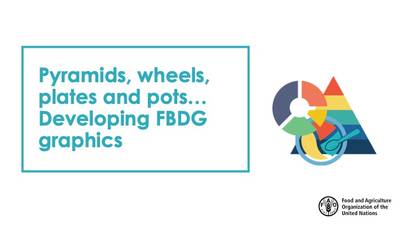Pyramids, wheels, plates and pots… Developing FBDGs graphics

Date: 24 March 2020
Introduction by: Fatima Hachem, Senior Nutrition Officer, Nutrition and Food Systems Division, FAO
Presenters:
- Yenory Hernández-Garbanzo, Nutrition and Food Systems Consultant, FAO headquarters/Regional Office for Latin America and the Caribbean
- Veronika Molina, Nutrition and Food Systems Consultant, FAO headquarters/Regional Office for Latin America and the Caribbean
- Robert Post, CEO and Principal FoodTrition Solutions, LLC
Moderator: Melissa Vargas, Nutrition and Food Systems Consultant, FAO headquarters
Recording: https://youtu.be/G8_eJX-HKX8
Abstract: Graphics and visuals are frequently the most recognizable elements of national Food-based Dietary Guidelines (FBDGs) communication materials.
Different countries make use of graphics for different purposes, such as: 1) to represent the main FBDGs messages, 2) to visualize the recommended proportions of various food groups, 3) as visual cues to easily recognize the FBDGs, and 4) to supplement the learning materials produced for different target groups (e.g. children, adults, health practitioners, decision makers, etc.).
Although such graphics are common around the globe, the way they are developed is not always outlined, published and/or disseminated. In addition, they are seen by many as a main deliverable of the process of developing FBDGs. In reality, these graphics are not stand-alone products nor do they exist in a vacuum or in isolation.
In this webinar, and based on country experiences, we will address the following questions:
- What are FBDG graphics? What is their purpose?
- What is the recommended process for developing FBDG graphics?
- What are the lessons learned and main challenges in developing and testing FBDG graphics?

